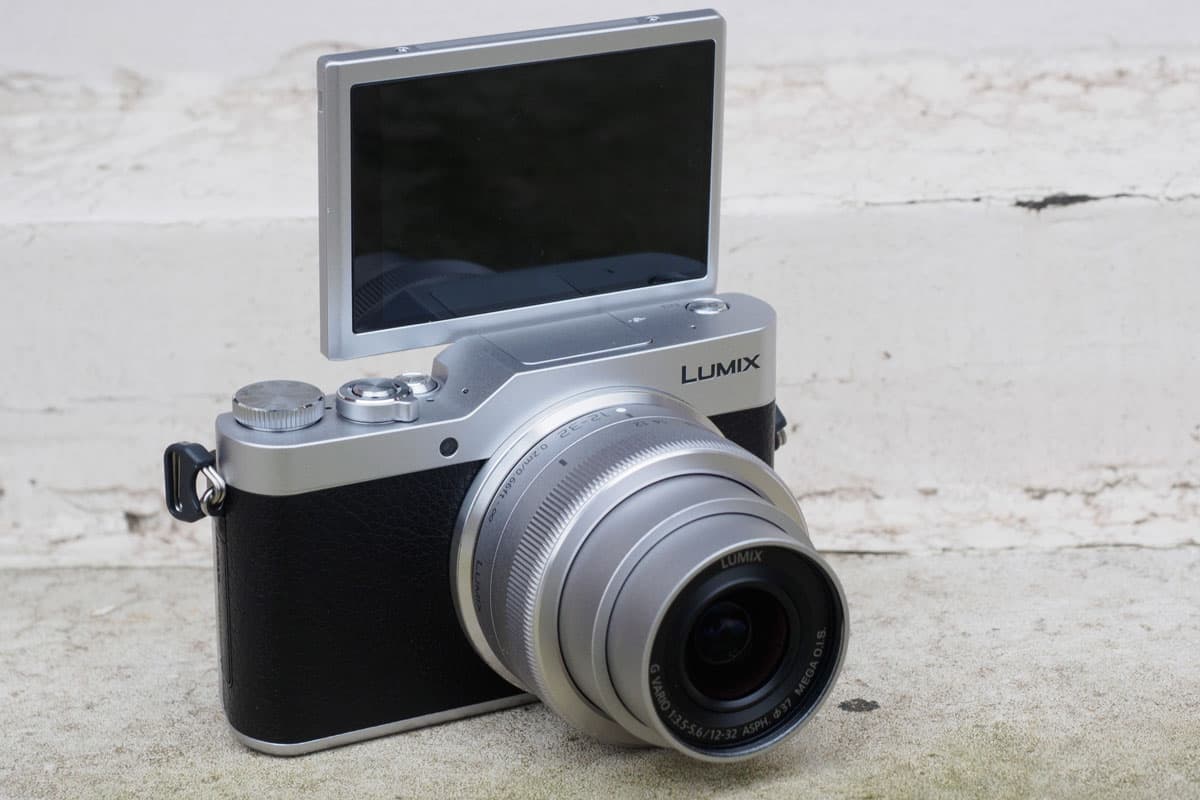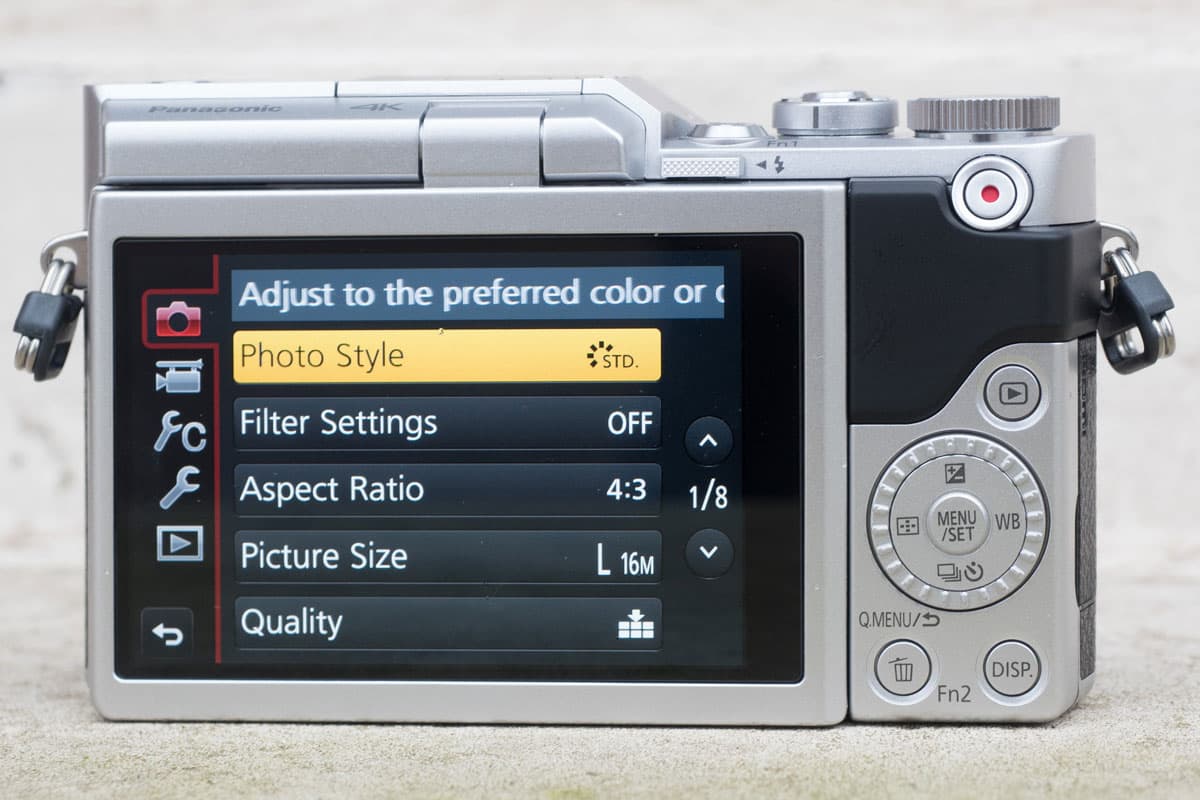Panasonic GX800 at a glance:
- 16-millon-pixel Four Third sensor
- Tilting touchscreen
- Available in four colours
- £499.99 in a kit with 12-32mm f/4.5-5.6 OIS lens
Panasonic’s second camera announcement of the day after its flagship GH5 is the entry-level Lumix DC-GX800 (also known as the GX850, and GF9). This is a compact-bodied Micro Four Thirds mirrorless camera with a screen that hinges upwards to face forwards for selfies. If the idea sounds familiar, that’s because the GX800 is effectively a replacement for the 2-year-old GF7 (indeed in some parts of the world it will be known as the GF9). But it’s been restyled, updated and renamed to fit into the GX range, which now has three tiers comprising the GX8, GX80, and GX800. The camera will be available at the end of January in four colour schemes – all black, black and silver, tan and orange – and sold in a kit with Panasonic’s tiny, retractable 12-32mm zoom for £499.99.
It has to be said that Panasonic’s cosmetic reworking of the GX800 is something of a triumph. In place of the GF7’s cheesy-looking faux-SLR ‘hump’ that housed the pop-up flash and the hinge for the tilting screen, the GX800 gets a stepped top-plate with a subtly-styled, gently curving front that alludes to old film rangefinder cameras from the 1960s and 1970s. It immediately looks and feels much more classy, with a far more successful retro effect. This matters in a market where it’s going up against some very attractive designs such as the Olympus PEN E-PL8 and Fujifilm X-A10.
Panasonic has also revised the internals, with an updated 16-million-pixel Four Thirds sensor that forgoes an optical low-pass filter to provide higher resolution. This means that it should give similar image quality to its bigger brother the GX80, a camera that we like a lot. The GX800 also has the ability to record 4K video, which is unique at this level, and alongside it gains Panasonic’s signature 4K Photo mode. This allows you to shoot 8-million-pixel stills at 30 frames per second, with the images stored in a video file format. Panasonic then provides a simple interface for extracting your favourite frames as still images. This is great for capturing fleeting moments that usually require lucky timing.
With its tiny body, the GX800 only has space for a few external controls, but like the GF7 it makes the most of them, aided by Panasonic’s excellent touchscreen interface. It has just a single, slightly fiddly rear dial and just a few buttons for accessing the main functions. However Panasonic’s well-designed onscreen Q Menu lets you change a lot of secondary settings quickly using either the physical controls or the touchscreen. The two buttons on the top plate that are used to activate the useful 4K Photo mode and the not-so-useful 4K Post Focus feature can be reassigned to other functions if you prefer. Usefully, the desired focus point can be moved simply by tapping the screen.
Unlike other recent Panasonic mirrorless cameras, the GX800 doesn’t include in-body image stabilisation so relies purely on in-lens optical stabilisation to counteract the blurring effects of camera shake. The good news here is that many of Panasonic’s lenses include OIS, and the ones that don’t are those least in need, such as wideangle zooms and fast primes. However users new to the Micro Four Thirds system should be aware that while Olympus lenses will fit and work perfectly, few include optical stabilisation. Again with many lenses this isn’t a huge problem, but it certainly matters with longer telephoto zooms where you’re better off buying Panasonic’s versions.
The GX800 does, however, inherit the hybrid mechanical / electronic shutter previously used by the GF7 and before it, the GM1. This is extremely quiet in mechanical mode and completely silent in electronic mode, meaning you can use the camera in sensitive environments without disturbing bystanders.
First Impressions
Having had the opportunity to try out the GX800 briefly, I have to say that it feels like a very strong contender in the entry-level market. While the GF7 was a perfectly nice little camera, but never really stood out from the crowd, the GX800 improves on it in a couple of small but important ways. The revised sensor should bring slightly better image quality, while the addition of 4K video is impressive at this price point, and could well sway potential buyers who’ve recently bought 4K TVs. Perhaps as importantly though, the camera’s external redesign brings a sense of quality and style to the GX800 that the GF7 was conspicuously lacking.
The GX800 looks like it should be an attractive camera for first-time users who’ve previously only taken pictures with their smartphone or perhaps a compact camera. It can be used in fully automatic mode, but has enough functions to allow budding photographers to experiment with taking manual control as they learn how to use it. But experienced enthusiasts could likewise appreciate it as an extremely capable little camera that’s far more portable than any SLR system.
See also:
Panasonic Lumix DC-GH5 review: hands-on first impressions
Panasonic introduces Leica 12-60mm f/2.8-4 and updates four lenses
Off Topic: A bit of Panasonic Lumix naming history
In the past, Panasonic’s mirrorless lineup read like an alphabetti spaghetti of model names with little clear relationship between them. Alongside the SLR-style Lumix G-series were their video-focused cousins in the GH series. Flat-bodied rangefinder-style designs included the entry-level GF series, premium compact GM series, and enthusiast-focused GX series (which itself had grown out of the GF series, with the GX1 being the spiritual successor the original GF1). With the range lacking any distinctive design signature, this all felt a bit incoherent and scattergun. At one point towards the end of 2014 the company was selling the GF6, G6, GX7, GM1, GH4, and GM5 simultaneously: not a problem for seasoned camera-watchers who understood the market, but distinctly confusing for new buyers.
It appears Panasonic has decided to simplify the message, starting with its rangefinder-style designs. So now we have the high-end GX8, mid-range GX80 and entry-level GX800, which hopefully will make the lineup much easier for consumers to understand. Among the SLR-style designs, though, things are still less simple, with the video-focused GH5 and the older GH4 sitting alongside the more photo-oriented G80 and its lower-end sibling, the G7. But I’d expect that to change, and you don’t need the deductive skills of Sherlock Holmes to hypothesise that at some point we’ll see an entry-level SLR-style body called the G800 to replace the G7.












